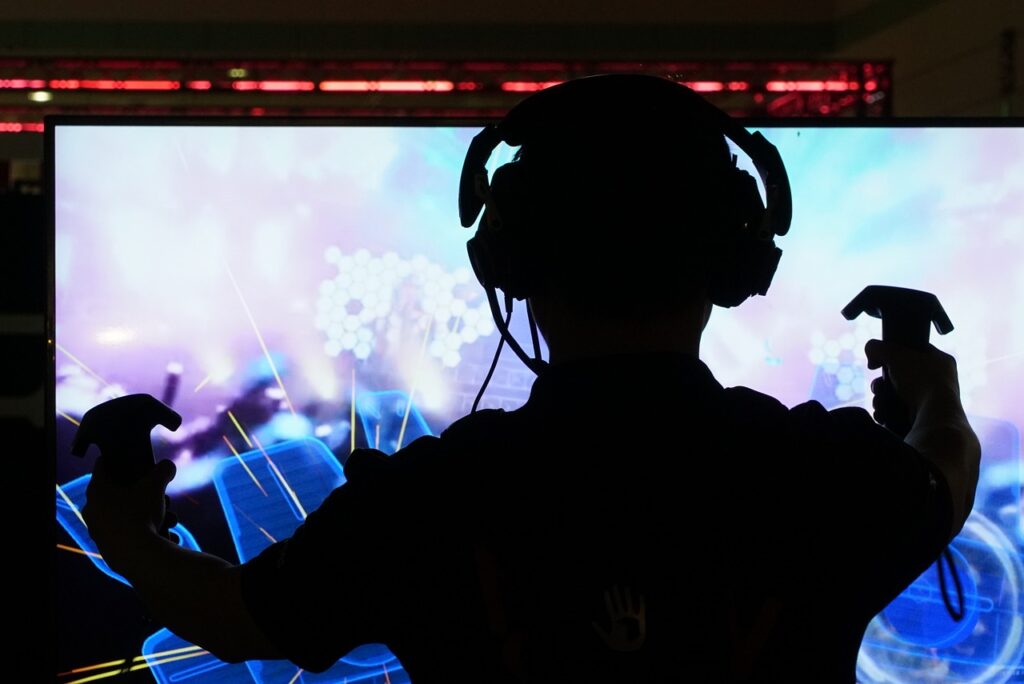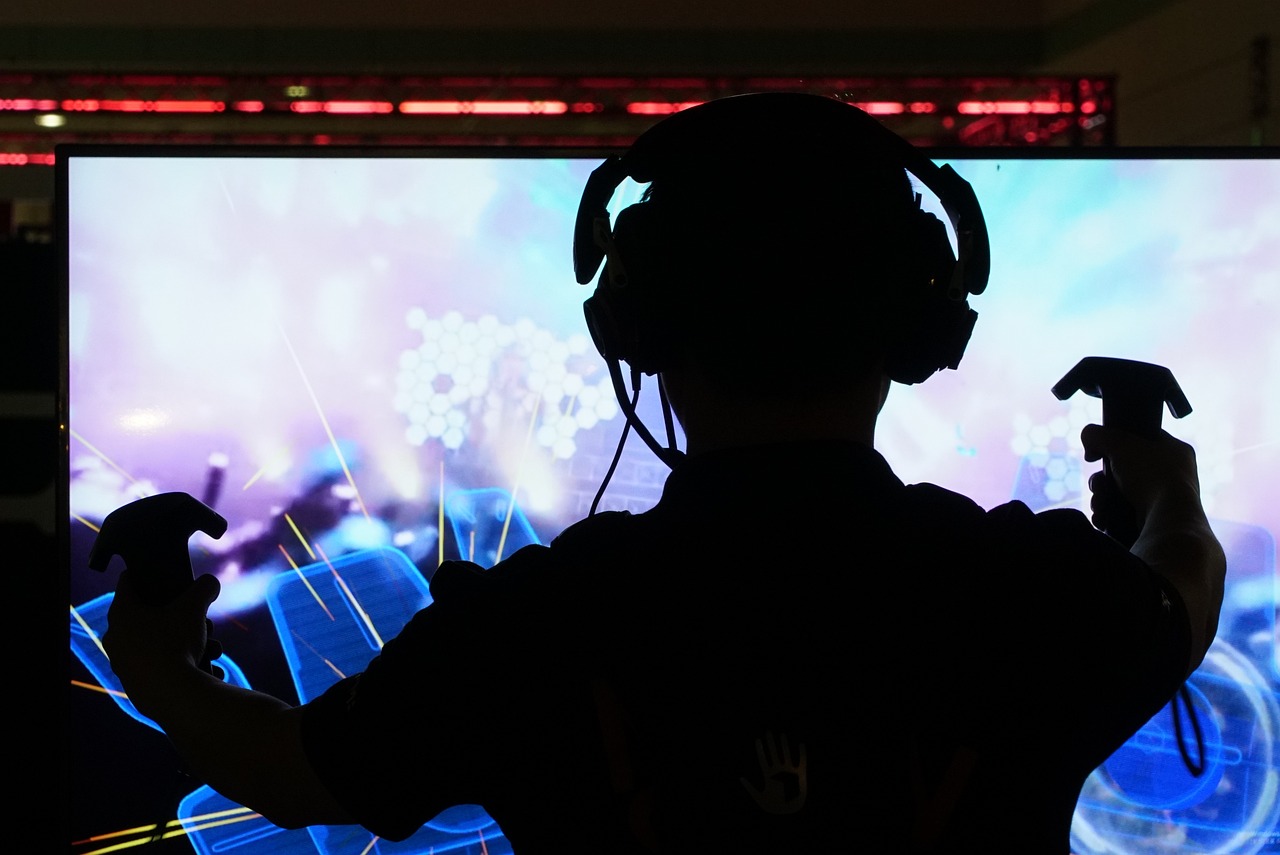Welcome to the world of virtual reality gaming, where you can immerse yourself in a world of endless possibilities and explore new horizons unlike anything you’ve ever experienced before.
With advancements in technology, the gaming industry has come a long way from the days of Pong and Space Invaders. Today, gamers are able to experience a level of realism that was once thought impossible, thanks to virtual reality.
Virtual reality is the future of gaming, offering an unparalleled level of immersion that transports you to a different world. Whether you want to explore a fantasy realm, fight off hordes of zombies, or simply enjoy a relaxing stroll through a beautiful landscape, virtual reality gives you the ability to do so in a way that is not possible with traditional gaming.
In this article, we’ll explore the fundamentals of virtual reality, its advantages and challenges, the future of VR gaming hardware and software, as well as the social and psychological implications of this exciting new technology.
The Evolution of Gaming Technology
From clunky graphics to realistic visuals, gaming technology has come a long way. With the advancement in technology, gaming is no longer limited to just a few pixels on a small screen.
From motion control to cloud gaming, the gaming industry has seen a significant evolution in the past few years. Motion control technology has revolutionized the way we interact with games. With the help of motion sensors, players can move around and control the game using their body movements. This technology has made gaming more immersive and has given players a more realistic experience.
Cloud gaming is another technological advancement that has changed the gaming world. With cloud gaming, players can access games from anywhere, without the need for expensive hardware. The game is played on a remote server, and the player can access it through a device that is connected to the internet. This technology has made gaming more accessible and has given players the ability to play high-quality games, even on low-end devices.
The evolution of gaming technology has paved the way for the future of gaming, and virtual reality is the next big thing in the gaming industry.
Understanding the Fundamentals of Virtual Reality
Getting lost in a virtual world can be like diving into an alternate dimension where the rules of physics don’t apply. Virtual reality hardware has come a long way since the early days of clunky headsets and limited graphics. Today, VR gaming experience offers a level of immersion that has never been possible before.
Virtual reality hardware consists of a headset, controllers, and sensors that track your movements. The headset fits over your eyes and ears, providing a 360-degree view of the virtual world. The controllers allow you to interact with objects in the game, while the sensors track your movements in real-time.
The result is a gaming experience that feels like you’re really there, whether it’s exploring a haunted house or battling aliens in space. With the continued development of virtual reality technology, the future of gaming is looking more exciting than ever before.
The Advantages of VR Gaming
Immerse yourself in a whole new world of excitement with the incredible advantages of VR gaming.
One of the biggest advantages that VR gaming provides is improved immersion. With VR, you can experience games like never before, as you’re transported into a fully-realized digital world that you can interact with in a way that feels natural and intuitive. This immersion is achieved through a combination of high-quality visuals, realistic sound effects, and precise, motion-tracked controls.
In addition to improved immersion, VR gaming also offers enhanced gameplay mechanics. With VR, you can use your entire body to interact with the game world, rather than just relying on a controller. This allows for a much deeper level of gameplay, as you can move around, dodge attacks, and aim with precision. Furthermore, many VR games take advantage of the technology to create unique and innovative gameplay mechanics that simply wouldn’t be possible in traditional games.
Overall, VR gaming offers a truly revolutionary gaming experience that’s sure to excite and engage players of all ages and skill levels.
The Challenges of Implementing VR Gaming
You may feel like you’re walking on a tightrope as you navigate the difficulties of bringing VR gaming into the mainstream. One of the biggest challenges faced by developers is hardware limitations. VR headsets require powerful computers and graphics cards to run smoothly, and not everyone has access to this kind of technology. This can limit the potential audience for VR games and make it difficult for developers to justify investing time and money into creating VR titles.
Another challenge is user accessibility. While VR gaming can provide an immersive experience, it also requires users to be physically active and move around. This can be a problem for those with disabilities or limited mobility. Additionally, VR headsets can cause discomfort or motion sickness in some users, which can be a barrier to adoption. Developers will need to find ways to make VR gaming more accessible and comfortable for a wider range of users if they want it to become a mainstream form of entertainment.
The Future of VR Gaming Hardware
As technology advances, hardware for VR is becoming more powerful and accessible, opening up new possibilities for immersive experiences. One of the biggest challenges of VR hardware has been creating designs that are comfortable to wear for extended periods of time. Fortunately, many companies are focusing on designing ergonomically friendly VR hardware to address this issue. This includes using lightweight materials and incorporating adjustable straps and padding to ensure a secure and comfortable fit.
Another area of focus for VR hardware is improving headset resolution. Higher resolution displays are necessary to create a more realistic and immersive experience. Currently, many VR headsets have a resolution of 1080 x 1200 pixels per eye, but companies are working on increasing this to 4k and beyond. This will allow for even more detail and clarity in virtual environments, making the experience feel even more real.
With these advancements, the future of VR gaming hardware looks bright and promises to deliver even more thrilling and immersive experiences.
The Future of VR Gaming Software
Get ready to experience the next level of immersive gameplay with the latest VR software updates. VR gaming has come a long way from its early days thanks to advancements in technology. Today, there are a plethora of VR games available that offer a unique and unforgettable user experience. From action-packed shooters to puzzle games, VR has something for everyone.
One of the most exciting aspects of VR gaming is its market potential. As the technology continues to improve, the demand for VR games is expected to grow significantly. According to a report by Statista, the global VR gaming market is projected to reach 45.09 billion U.S. dollars by 2025. With such high potential for growth, we can expect to see a surge in VR game development and even more innovative gaming experiences in the near future.
The Social and Psychological Implications of VR Gaming
Experience the impact of VR gaming on social and psychological aspects as we explore its effects on human behavior and perception.
Virtual reality gaming has revolutionized the way we play games, but it has also changed the way we interact with others. With VR, players can now immerse themselves in a virtual world where they can interact with other players in real-time. This has led to the creation of virtual communities where players can socialize and form friendships. However, some experts have raised concerns about the impact of virtual reality gaming on social interaction. They argue that excessive use of VR can lead to social isolation and a lack of real-world social skills.

Apart from social interaction, virtual reality gaming also has psychological effects on long-term users. Studies have shown that prolonged use of VR can lead to a phenomenon known as ‘cybersickness,’ which is similar to motion sickness. This can cause nausea, dizziness, and disorientation, which can affect a player’s overall well-being. Additionally, VR gaming can also lead to addiction, which can have negative effects on a player’s mental health.
It’s important to note that while virtual reality gaming has its benefits, it’s essential to use it in moderation to avoid any negative effects on social interaction and psychological well-being.
Frequently Asked Questions
What are the potential health risks associated with prolonged use of virtual reality gaming?
You might feel like you’re in another world when you put on your virtual reality headset, but the potential side effects of prolonged use are very real.
Some of the health risks associated with VR gaming include headaches, eye strain, and motion sickness. In extreme cases, users have reported seizures and disorientation.
However, there are preventive measures you can take to minimize these risks. Make sure you take breaks every 20-30 minutes and adjust your headset properly to avoid eye strain.
If you start feeling dizzy or nauseous, take a break and step away from the game. While virtual reality gaming can be an exciting and immersive experience, it’s important to be aware of the potential health risks and take the necessary precautions to stay safe.
How does virtual reality gaming differ from traditional gaming in terms of gameplay mechanics?
When it comes to gaming, you’re probably familiar with traditional modes of play – sitting in front of a screen, using a controller or keyboard to navigate through a digital world. But have you ever considered what it would be like to fully immerse yourself in a game?
That’s where virtual reality gaming comes in. Unlike traditional gaming, virtual reality offers an incredibly immersive experience that engages all of your senses. You’re not just seeing the game world, you’re feeling it too. This is thanks to the sensory feedback that virtual reality technology provides, which adds a whole new layer of realism to gameplay mechanics.
So, how does virtual reality gaming differ from traditional gaming in terms of gameplay mechanics? It’s a whole new level of interactivity that’s sure to change the gaming landscape for years to come.
What impact will virtual reality gaming have on the gaming industry as a whole?
Virtual reality gaming is set to have a huge impact on the gaming industry as a whole. Its innovative technology will push game developers to create new and exciting gameplay mechanics that were previously impossible with traditional gaming.
As more companies invest in virtual reality gaming, market competition will increase, leading to a wider range of options for gamers. With the ability to fully immerse oneself in a digital world, virtual reality gaming has the potential to revolutionize how we experience games.
The impact of this technology on the gaming industry will be immense, and it’s exciting to see where it will take us.
Can virtual reality gaming be used for educational purposes?
Did you know that virtual reality gaming can be used for educational purposes? The cognitive benefits of VR technology have been widely recognized, and educators are now exploring its potential as a tool for immersive learning.
From virtual field trips to historical sites, to simulations that allow students to practice complex procedures, the educational applications of VR are varied and exciting. Studies have shown that VR can improve recall, enhance spatial reasoning skills, and increase engagement and motivation in students.
As the technology continues to advance, it’s likely that we’ll see more and more innovative ways in which VR can be used to enhance learning and deepen our understanding of the world around us.
Are there any ethical concerns surrounding the use of virtual reality in gaming?
As you delve into the world of virtual reality gaming, it’s important to consider the ethical concerns that come along with it.
Privacy concerns are at the forefront of this topic, as the collection of personal data becomes more prevalent in these immersive environments.
Additionally, the potential for addiction is a serious issue. Players can become so engrossed in the game that they lose sight of reality.
It’s important to approach virtual reality gaming with caution and to be aware of these potential dangers.
Conclusion
Congratulations, you’ve just taken a sneak peek into the future of gaming! With the rapid advancement of technology, virtual reality (VR) gaming has become the next big thing in the gaming industry.
As you’ve read in this article, VR gaming boasts numerous advantages, from providing a more immersive and realistic gaming experience to enabling gamers to interact with their virtual environment in a way that was never before possible.
But while the future of VR gaming looks bright, it also poses significant challenges. The high cost of VR gaming hardware, the need for powerful computing systems, and the potential social and psychological implications are just a few of the obstacles that developers must overcome to make VR gaming a mainstream success.
Despite these challenges, the future of VR gaming is exciting, and it’s only getting better. With the development of more affordable and accessible hardware, and the creation of innovative software to support VR gaming, it’s only a matter of time before we all have a headset in our homes.
It’s time to get ready for a gaming experience that will transport you to another world, and who knows, maybe you’ll be the next gamer to break the high score record using nothing but a headset and a pair of controllers. So, get ready to take the plunge into the world of VR gaming, and let your inner child run wild!




